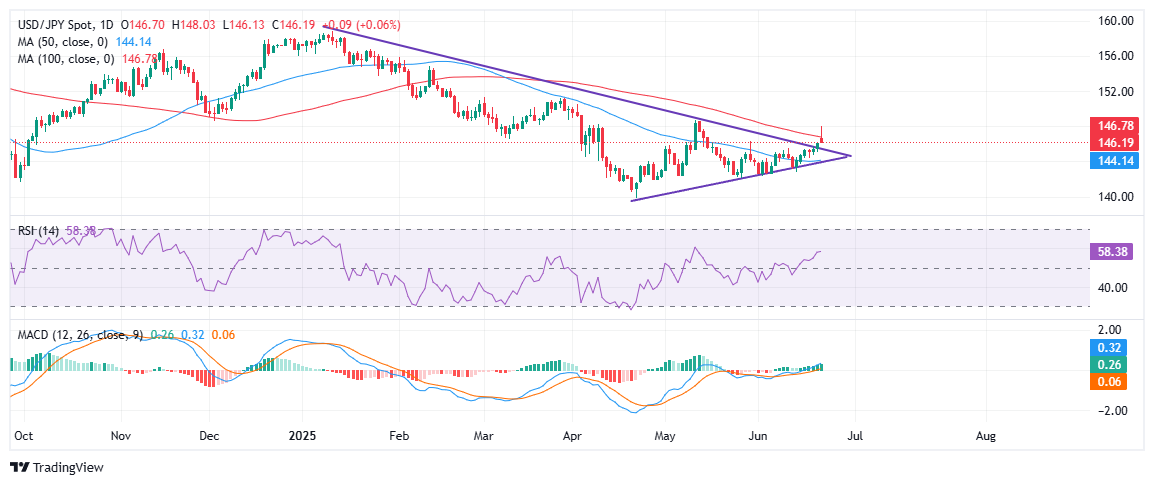USD/JPY pulls back below 147.00 as US Dollar softens on mixed PMI, Fed Bowman remarks
- USD/JPY trims early gains after failing to hold above the 100-day MA near 148.00.
- Japanese Yen draws safe-haven demand following reports of Iran’s attack on US airbases in Qatar.
- US Dollar Index drops below 99.00 as mixed PMI data and Bowman’s dovish comments weigh.
The Japanese Yen (JPY) reverses its decline from a five-week low, strengthening against the US Dollar (USD) on Monday, as the Greenback loses ground after mixed US PMI data and dovish remarks from Federal Reserve (Fed) Governor Bowman. Reports that Iran attacked US airbases in Qatar sparked broad safe-haven flows, but traders favored the Yen over the US Dollar, reining in USD/JPY gains after a technical breakout.
The USD/JPY pair started the week on a firm footing, initially extending last week’s breakout momentum to hit an intraday high of 148.03. However, the pair failed to sustain gains above its 100-day Simple Moving Average, triggering a pullback toward 146.20 at the time of writing during the American trading hours.
Meanwhile, the US Dollar Index (DXY), which measures the Greenback’s performance against a basket of six major currencies, slipped back below the key 99.00 mark amid the mixed PMI prints and dovish Fed signals. At the time of writing, the index was last seen around 98.50, underscoring the recent cooling in broad US Dollar demand despite lingering geopolitical tensions.
Fresh US PMI data provided a mixed signal for the US Dollar, with manufacturing activity expanding slightly while the services sector showed signs of slowing. Adding to the softer tone, Fed Governor Michelle Bowman remarked that inflation is steadily moving closer to target and hinted she could back a rate cut as soon as the July meeting if disinflation progress holds steady, boosting market bets on a summer policy shift.
From a technical perspective, after staging a decisive breakout above a multi-month descending triangle last week, USD/JPY bulls initially carried the pair to a fresh intraday high of 148.03 in early Monday trade. However, momentum faded as the pair failed to gain traction above the 100-day Moving Average (MA), which remains a critical technical barrier near 147.80–148.00.
The rejection at this moving average has triggered a healthy pullback, dragging the pair lower toward 146.20 at the time of writing. Technically, the zone around 144.50–145.00 now stands out as key support. This area aligns with the previous triangle resistance, which may flip into a support floor if bulls defend it successfully — a classic breakout retest scenario.
Momentum signals remain constructive but hint at cooling steam in the near term. The Relative Strength Index (RSI) has retreated modestly toward the mid-50s, staying out of overbought territory, while the Moving Average Convergence Divergence (MACD) continues to hover in positive territory but shows a flattening histogram — a sign that immediate buying pressure may pause. A clear daily close above 148.00 would unlock scope for a push toward 149.50 and the psychological 150.00 level. Conversely, a break below 145.00 could drag the pair deeper toward the 50-day moving average (MA) near 144.14, putting the breakout narrative at risk and shifting the short-term bias back to neutral.


